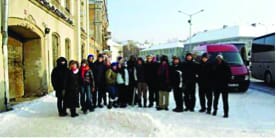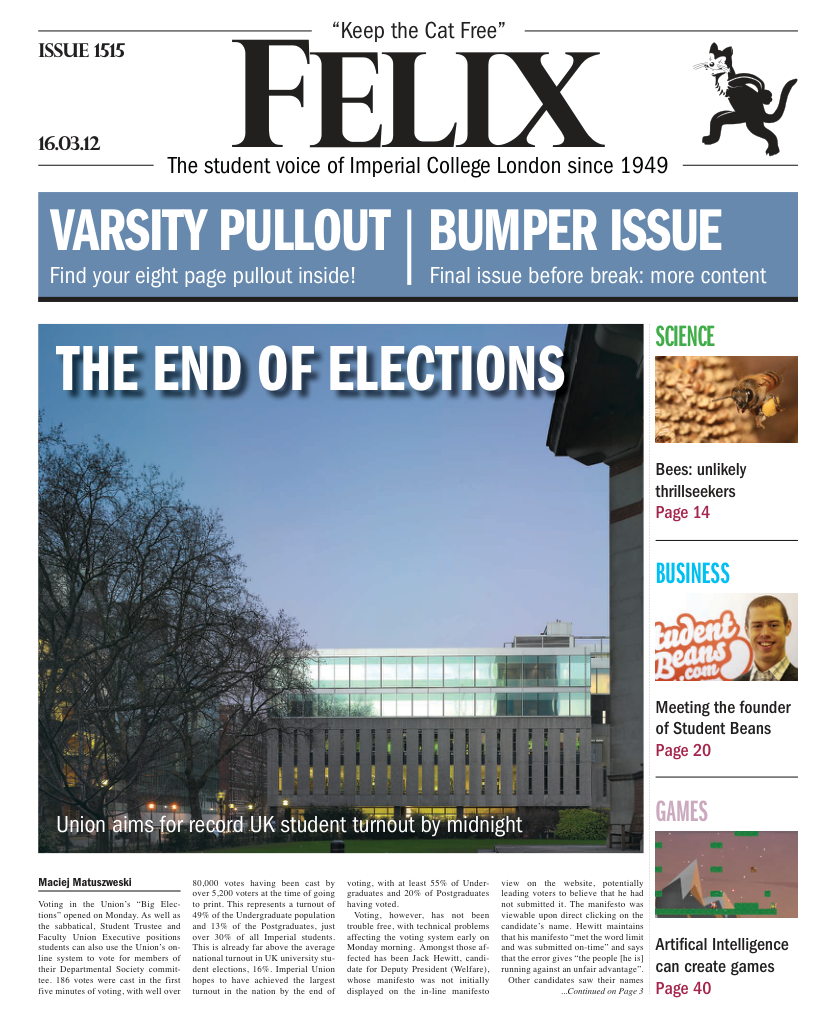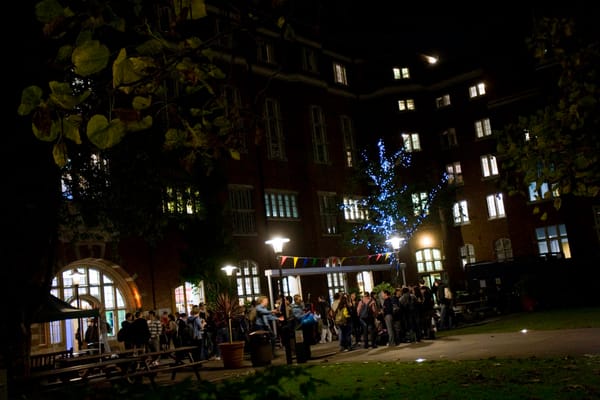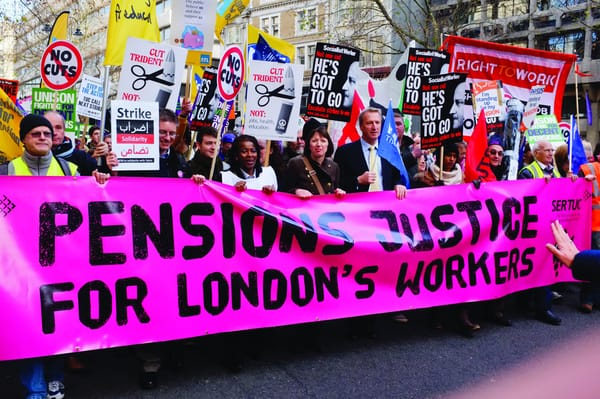Revisiting the past to protect our future
Students from Imperial Jewish Society travelled to Lithuania to explore the country’s Jewish heritage. JSoc member Andrea Levy describes the experience of revisiting the past

Imperial JSoc members wrapped up to keep warm in -25ºC temperatures during their heritage trip to Lithuania.
The action began when nineteen valorous Imperial College Jewish Society members and Rabbi Broder, the London Student Chaplain, met at London Gatwick airport to embark on a surreal trip to Kovno, Lithuania – the second largest Lithuanian city after Vilna. It would be a trip to a centre of European Jewry and rabbinic learning in the 18th to 20th Centuries. For many of us, it would also be a trip of rediscovery of our eastern European roots and of return to the very place our ancestors once fled from.
From around the 14th Century, the Jewish community in Lithuania grew considerably, probably as a result of the fact that Vytautas the Great, ruler of the Grand Duchy of Lithuania from 1392 to 1430, granted freedoms to the Jews that were restricted elsewhere. These freedoms included the right to practice their faith and thus to celebrate their religious holidays, protection of synagogues and cemeteries, the right of unrestricted mobility, trade, financial activities, amongst others.
Hence, Jews became deeply rooted in Lithuania, developing a rich heritage in the country, despite later turmoil, including persecution and expulsion in the late 15th Century. Anti-Semitism picked up in the 20th Century and culminated with the brutal assassination of the vast majority of the Lithuanian Jewish community by the Nazis in the Second World War. In fact, a significant number of Jews in the UK have ancestors amongst those who fled.
The expedition began when we met our Kovno-born tour guide Chaim, an expert of all things Jewish in Lithuania, and set off for Vilna. The first stop was the small town in Žiežmariai, where there had once been a Jewish community and where we walked into what remained of a wooden synagogue. It was an immediate connection to our past, and we experienced the gratification of returning to the place from where our ancestors once fled. Indeed, the majority of Lithuanian Jews are known to have inhabited small towns such as this, which were a cradle of Jewish culture, whilst often working in the larger cities.
We visited the largest Jewish cemetery in Lithuania in the outskirts of Vilna, where we saw the tomb of the highly influential Rabbi Eliyahu (1720-1797), known as the Vilna Gaon (“genius of Vilna”) after an enlightening talk about his ethos by a direct descendant of his among us. Once in Vilna, a noteworthy visit was to the site where the first copies of the “Vilna Shas” were printed, which is used throughout the Jewish world as the authoritative, traditional edition of the Talmud; rabbinic discussion concerning Jewish law. Indeed, there was a widespread saying that “if one wants to gain wisdom – one goes to Vilnius”, given the vast number of centres of biblical study and distinguished scholars in the city.
We came together in the evening for a superb, traditional JSoc Friday night dinner with Israeli students of medicine in Kovno. The next morning, on walking around the Kovno city centre it became clear we were the only ones imprudent enough to be outside in such cold, snow-lined streets – there wasn’t a soul to be seen. An ideal opportunity to roll down hills covered by snow in the island formed at the confluence of the two rivers – the Nemuras and the Neris.
Furthermore, remarkable visits made on our last day, included the now abandoned synagogue in the Kovno town of Alexandrot, where Rabbi Israel Salanter was based; head of the Mussar movement – a Jewish ethical and educational movement, born in 19th Century Lithuania. We walked the streets of the Slobodka neighbourhood where the renowned Slobodka Yeshiva (Jewish educational institution) was once located and stood before breath-taking views of Kovno, on a hill where the first novel written in Hebrew is thought to have been written, by the rivers which were once the border between Russia and former Prussia.
Most notable perhaps, was listening to Chaim narrate to us the story of escape of the last group of Jewish prisoners of Fort 9, a Nazi concentration camp. Standing in the dark silence of the tunnels in the fort in the biting cold was a powerful means of helping us understand what was experienced by our forerunners.
In essence, we are very thankful to everyone who made this trip possible. The trip was funded by Holocaust survivor and businessman William Stern, UJS, Tribe and Imperial College Union. Thanks also go to the enthusiastic organizers of the trip within Imperial JSoc, Noah Nathan first and foremost, not to mention Gabriella Lebrecht and Yoni Weiner. Not only was it a cool off – -25ºC cool off – from a long week at university, but a unique experience we won’t forget.









